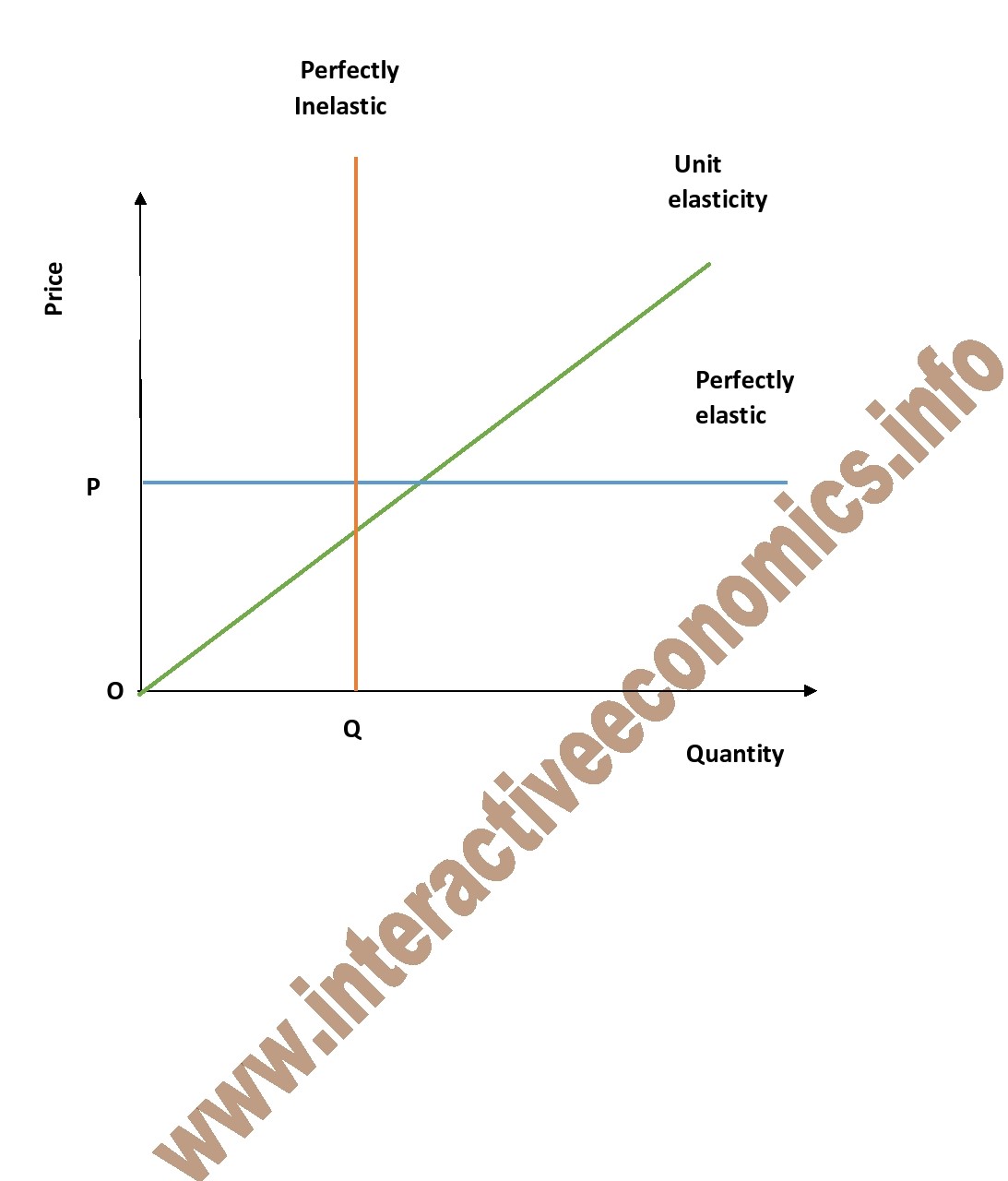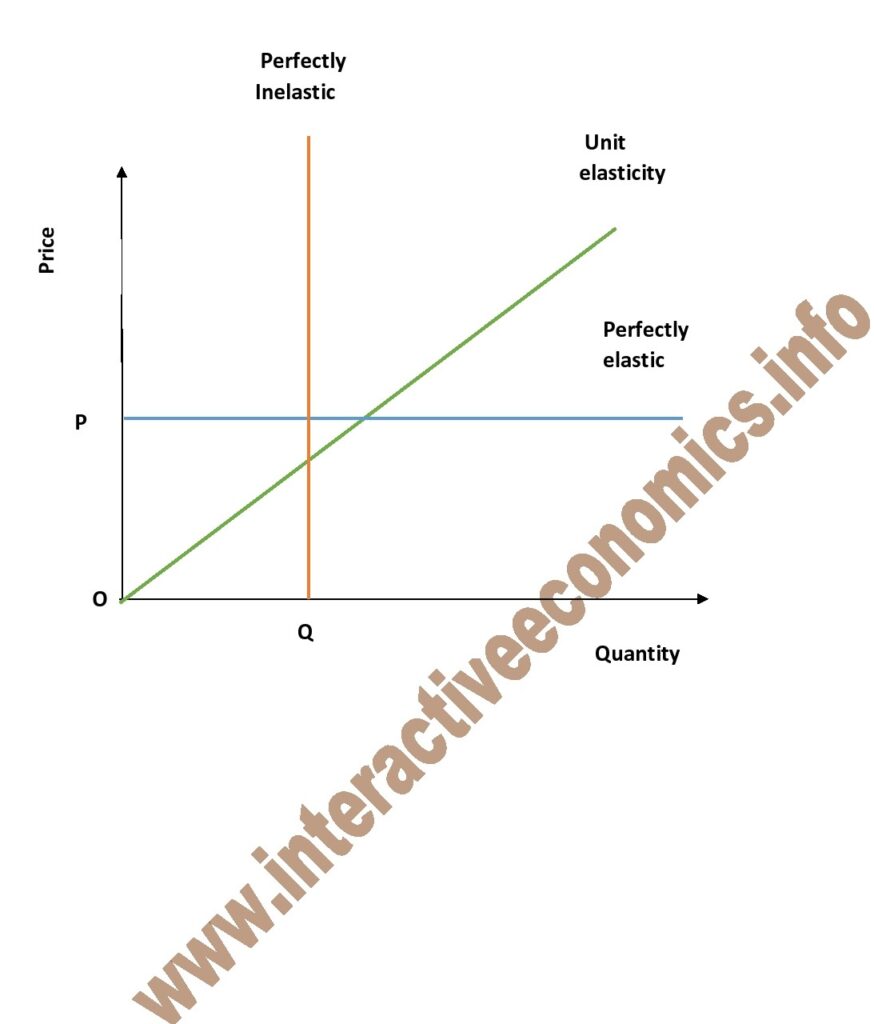
Elasticity of Supply
A quantified relationship between the supply of a good and its price is established by the elasticity of supply. As a result, we may use the idea of elasticity to define the numerical change in supply with the change in a commodity’s price. It should be noted that elasticity of supply can also be determined in relation to the other supply factors. Moreover, a commodity’s price is the main factor influencing supply. As a result, we frequently refer to the price elasticity of supply. The ratio of the percentage change in price to the percentage change in quantity supplied of a good or service is known as the price elasticity of supply.
Es= [(Δq/q)×100] ÷ [(Δp/p)×100]
Es= (Δq/q) ÷ (Δp/p)
Where Δq= The change in quantity supplied
q= The quantity supplied
Δp= The change in price
p= The price
Es= Elasticity of supply
Elasticity from a Supply Curve:
There are two other approaches that both employ the supply curve to determine the price elasticity of supply in addition to the approach just described. Either at a given location on the supply curve (known as point elasticity) or between two prices (known as arc-elasticity), we can determine the elasticity.
The point elasticity of supply can be calculated using the following formula:
Es= (dq/dp)×(p/q)
where dq/dp is the slope of the supply curve.
The formula for calculating the arc-elasticity of supply is:
Es= [(q1 – q2)/( q1 + q2)] × [( p1 + p2)/(p1 – p2)]
Types of Elasticity of Supply:
1. Perfectly Inelastic Supply:
If a certain amount of a good or service can be obtained at any price, it has a perfectly inelastic supply. For such a service or good, the elasticity of supply is zero. A line parallel to the Y-axis represents a supply curve that is completely inelastic. This illustrates how supply doesn’t change with price and always stays the same.
This topic includes the availability of rare goods like the Mona Lisa artwork. No matter what the price is, we are unable to raise the supply.
2. Relatively Less-Elastic Supply:
We say that a commodity has a relatively less elastic supply when the change in supply is relatively smaller than the change in price. The price elasticity of supply assumes a value smaller than 1 in such a situation.
3. Relatively Greater-Elastic Supply:
We say a commodity has a relatively larger-elastic supply when the change in supply is comparatively greater than the change in price. The price elasticity of supply assumes a value greater than 1 in such a situation.
4. Unitary Elastic:
The change in quantity provided of a commodity is precisely equivalent to the change in its price for a commodity with a unit elasticity of supply. In other words, the change in the commodity’s price and supply are proportionally correlated. To be clear, in this scenario, the supply’s elasticity is equal to 1. A unitary elastic supply curve furthermore crosses the origin.
5. Perfectly Elastic supply:
A good with an infinitely elastic supply has perfect elastic supply. In such a scenario, the supply decreases to zero with even a minor price decrease and increases to infinity at even a slight price increase. This demonstrates that the producers of this product are prepared to sell it in any quantity for a premium. A straight line that is perpendicular to the X-axis presents a perfect supply curve.
